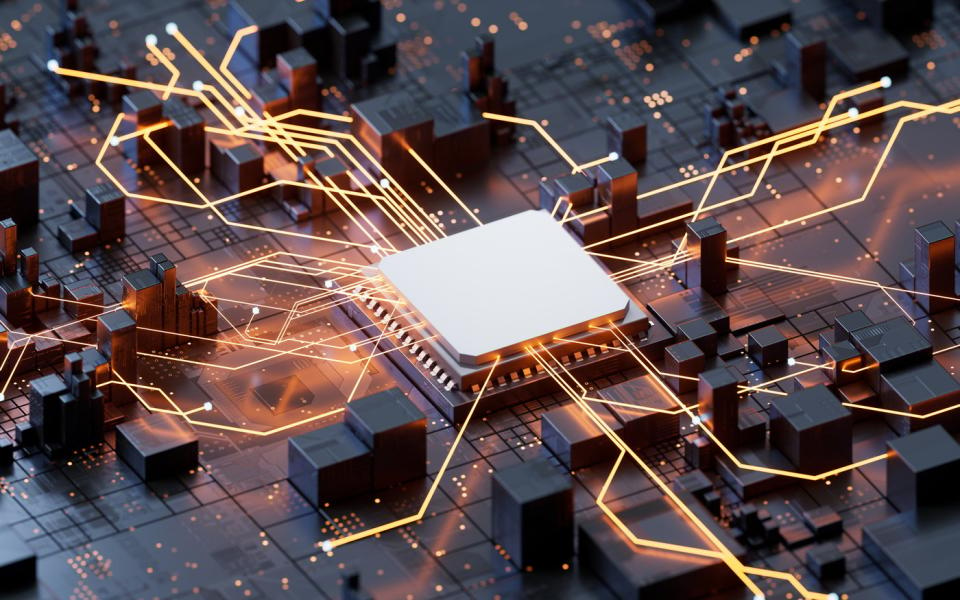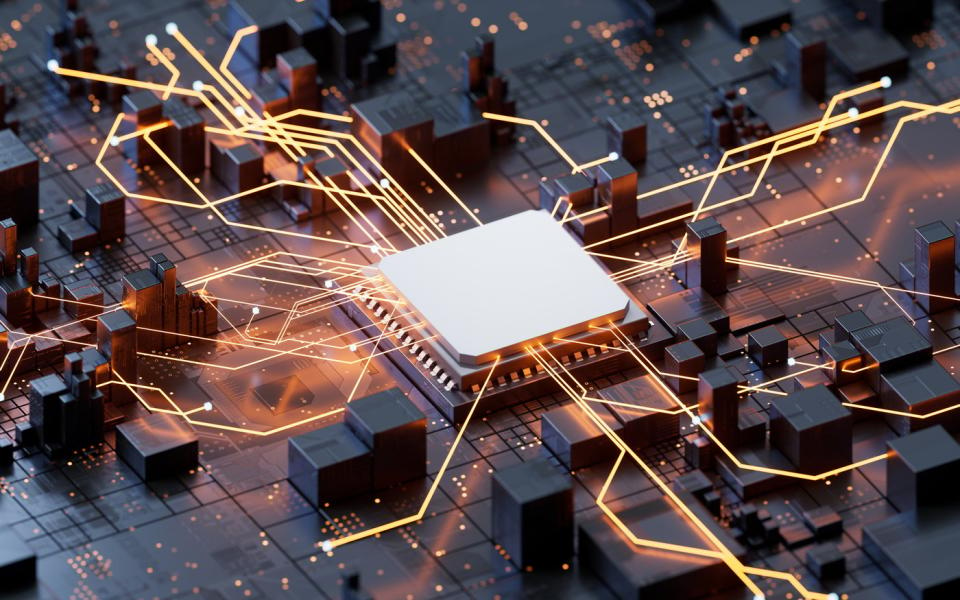Arm Holdings (NASDAQ: ARM) and Intel (NASDAQ: INTC) are two of the most important chipmakers in the world. Arm is the world’s leading designer of mobile CPUs, while Intel is the largest producer of PC and server CPUs.
Arm only licenses its designs to other chipmakers, but Intel is an integrated device manufacturer (IDM) that designs, manufactures, and markets its own chips. Arm’s flexible approach and power-efficient designs enabled its top customers — including Qualcomm, MediaTek, and Apple — to conquer the smartphone chip market.
Intel, which stubbornly tried to miniaturize its PC-oriented x86 CPUs for mobile devices, failed to keep up with those Arm-based chipmakers.

Arm went public again last September, seven years after it was acquired by SoftBank. It stock has more than tripled from its IPO price of $51 to nearly $160 today. Intel’s shares have declined about 20% during the same period. Let’s see why Arm outperformed Intel by such a wide margin — and whether it could remain the better buy for the foreseeable future.
Why did Arm’s stock skyrocket?
Arm doesn’t face any meaningful competitors in its core market; its dominant chip designs are used in about 99% of all premium smartphones. However, that means Arm’s sales ebb and flow with the cyclical demand for new smartphones.
Arm has been designing new chips for the cloud and auto markets, and it expects those higher-growth sectors to gradually curb its dependence on smartphones. It also anticipates the rising demand for its higher-royalty artificial intelligence (AI)-optimized Armv9 chip designs to drive its near-term expansion across the smartphone, cloud, and auto sectors.
Arm’s revenue grew 33% in fiscal 2022 (which ended in March of that year) as the 5G market expanded, but dipped 1% in fiscal 2023 as the 5G upgrade cycle cooled off. In fiscal 2024, its revenue rose 21% as the smartphone market stabilized, it expanded its share of the auto and cloud markets, and it licensed more AI-oriented chips.
For fiscal 2025, Arm expects its revenue to grow 18%-27% as its adjusted EPS increases 14%-30%. That acceleration makes it seem like a balanced way to profit from the long-term expansion of the mobile, cloud, and AI markets.
But at $160 per share, Arm already trades for more than 100 times the midpoint of its estimated earnings this year. That frothy valuation suggests there’s a bit too much AI hype baked into its price, even though it isn’t growing as rapidly as market leaders like Nvidia.
Why did Intel’s stock stumble?
Intel still controls 64% of the x86 CPU market, according to PassMark Software, but it has ceded a lot of share to AMD over the past eight years. As Intel struggled to manufacture smaller, denser, and more power-efficient CPUs on its own, AMD outsourced its production to Taiwan Semiconductor Manufacturing. Intel then fell behind TSMC in the process race as it grappled with chip delays and shortages, and AMD pulled ahead with cheaper and more advanced CPUs.
Intel’s revenue rose 1% in 2021, but declined 20% in 2022 and dropped another 14% in 2023. That deceleration was caused by sluggish sales of PCs, intense competition from AMD, and the data center market’s focus on buying Nvidia’s GPUs to process AI tasks instead of upgrading their older CPUs. As Intel faces those tough headwinds, it’s trying to upgrade its own foundries to catch up to TSMC, but that costly expansion effort is crushing its operating margins.
That situation seems bleak, but analysts expect Intel’s revenue and earnings to increase 3% and 4%, respectively, in 2024 as the PC market stabilizes, it ramps up its shipments of its Meteor Lake chips, and the macro environment improves. The bulls expect Intel’s growth to accelerate in 2025 if it finally catches up to TSMC, but its stock isn’t a bargain at 29 times forward earnings. It also cut its dividend last year, and its forward yield of 1.6% won’t attract any serious income investors.
The better buy: Arm
I’m not a fan of either of these chip stocks right now. But if I had to choose one over the other, I’d pick Arm because it’s growing a lot faster, has a wider moat, operates a high-margin business, and doesn’t face any existential threats. Intel isn’t down for the count yet, but it needs to either catch up with TSMC or go fabless like AMD to impress the bulls again.
Should you invest $1,000 in Arm Holdings right now?
Before you buy stock in Arm Holdings, consider this:
The Motley Fool Stock Advisor analyst team just identified what they believe are the 10 best stocks for investors to buy now… and Arm Holdings wasn’t one of them. The 10 stocks that made the cut could produce monster returns in the coming years.
Consider when Nvidia made this list on April 15, 2005… if you invested $1,000 at the time of our recommendation, you’d have $786,046!*
Stock Advisor provides investors with an easy-to-follow blueprint for success, including guidance on building a portfolio, regular updates from analysts, and two new stock picks each month. The Stock Advisor service has more than quadrupled the return of S&P 500 since 2002*.
*Stock Advisor returns as of July 2, 2024
Leo Sun has positions in Apple. The Motley Fool has positions in and recommends Advanced Micro Devices, Apple, Nvidia, Qualcomm, and Taiwan Semiconductor Manufacturing. The Motley Fool recommends Intel and recommends the following options: long January 2025 $45 calls on Intel and short August 2024 $35 calls on Intel. The Motley Fool has a disclosure policy.
Better Chip Stock: Arm Holdings vs. Intel was originally published by The Motley Fool
EMEA Tribune is not involved in this news article, it is taken from our partners and or from the News Agencies. Copyright and Credit go to the News Agencies, email news@emeatribune.com Follow our WhatsApp verified Channel





